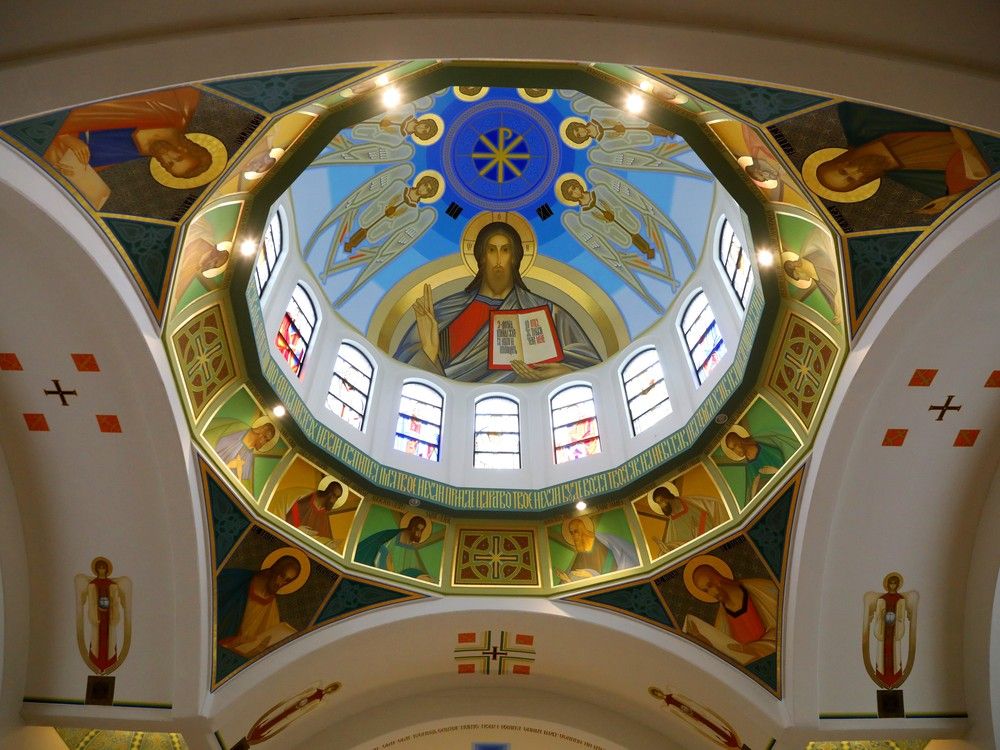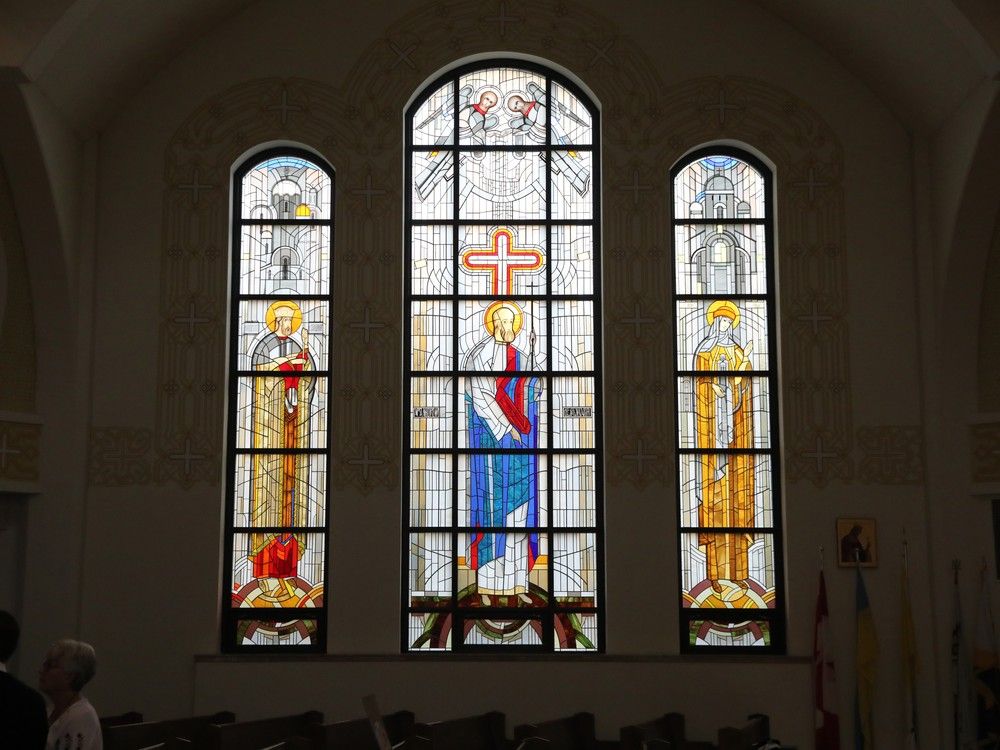Feb. 24, 2022: “It was supposed to be a regular day,” says Yaryna Mamchur. Instead,
Russian forces invaded
. The bombs falling on Kyiv “sounded like thunder — very weird thunder, with no rain.”
Mamchur is telling her story in a church basement surrounded by a bustling crowd of mainly women speaking in Ukrainian.
“We had to act very quickly,” she continues, “we had to cancel classes.”
Self-possessed, with nearly accent-less English, the 25-year-old speaks quickly because, rather than cancelling classes, she is about to step into one — in a partitioned room away from this noise. In Ukraine, she never taught catechism at her church.
But that is what she does in Ottawa.
In Kyiv, she was a high school physics teacher. As the bombs continued falling on the first day of invasion, and with Russian soldiers arriving at the very doorstep of the city — “it was very scary — really, really scary,” she says — Mamchur and her colleagues reconvened classes online, part of a school protocol that had been developed during the COVID-19 pandemic.
Over the course of that day, her students began to drop away, one by one. They were fleeing.
“It was surreal,” says Mamchur, who also eventually escaped, first to the western Ukrainian city of Lviv, then Poland, and now Canada, as a PhD student in physics at the University of Ottawa.
Mamchur is part of a population of newcomers from Ukraine that has caused
Saint John the Baptist Ukrainian Catholic Shrine
— the gold-domed church just north of Heron Road on the Rideau Canal — to swell in size over the past three years, the newly displaced joining an older diaspora.

Before the war, the pews here were often less than full for the Ukrainian-language service, which starts at 9:30 a.m. and lasts an hour and a half (the liturgy is entirely sung, by a choir and the priests standing amid the icons and incense, the acapella voices resonant and solemn).
“It was starting to dwindle,” says longtime parishioner Vera Yuzyk. “But with those coming from Ukraine, the pews started to fill up. They’re certainly giving us a renewal in our church.”
In fact, on a recent Sunday, the Ukrainian service drew a standing-room-only crowd. Presiding over the proceedings was Father Mykolai Kozelkivskyy, a Ukrainian-born, Edmonton-educated priest with a cherubic face who began here in December and calls the recent arrivals “new blood.”
But that renewal has come with complications.
Vera Yuzyk’s father,
Sen. Paul Yuzyk
, the son of Ukrainians who immigrated to Canada more than a century ago, helped found this shrine to mark the Millennium of Christianity in Ukraine, in 1988, but also as a national monument to Ukrainian Catholics and Canadian Ukrainians in general.
Hence that word “shrine.”
The church opened in 1987, shortly after the senator’s death. But its vivid wall paintings, stained glass (a rarity for Ukrainian Catholic churches) and sacred icons, undertaken by a team of five Ukrainian artists brought to Ottawa especially for the job, took years more to finish.
The shrine is soon holding a dinner to celebrate the 25th anniversary of the completion of that iconography and to help raise money to repair art that’s been damaged by a leaky roof.

“It’s a big challenge because after the war exploded in Ukraine, so many people came to Canada,” says Volodymyr Katrushenko, formerly an instructor at the
Lviv National Academy of Arts
in western Ukraine, who arrived in Canada in 1993 following the collapse of the Soviet Union.
Katrushenko helped the artists from Ukraine, many of whom he knew from Lviv, in installing the works at the shrine. Though some of the men have since died, he says the others continue to work in Ukraine: “It’s surreal because the whole country is still working despite all those bombs.”
Today, Katrushenko is in charge of the fundraising drive to maintain those very artworks.
Organizers hope to raise $25,000 by the end of the year. But the community is spread thin, with many
already donating money
to help defend or support Ukrainians in Ukraine, and to shelter the displaced who now find themselves in Ottawa.
“I give to Ukraine — we’re all giving,” says Yuzyk, herself a retired fundraising professional.
“However, we have to make sure our church is in good order,” she continues. “We can’t have leaks and icons that are going to cost us a lot of money to repair. So we’ve got to act quickly.”

It’s not known how many Ukrainians have made Ottawa home since the war began — at least for now.
Some 305,000 have arrived in Canada under the Canada-Ukraine Authorization for Emergency Travel, or CUAET, program, according to Immigration, Refugees and Citizenship Canada. But the department cannot say how many of those who came remain in Canada or where they settled.
Yaroslav Baran, chair of the displaced persons committee with the
Canada-Ukraine Foundation
, says he’s heard that as many as 15,000 displaced Ukrainians may be living in Ottawa-Gatineau.
A local Ukrainian-language class for children, Baran says, once welcomed about 80 children a week before the war. Today, there’s a waiting list, with some 300 children regularly attending.
IRCC said most of the Ukrainians who arrived under the CUAET program are likely to return when it is safe to do so. Still, the department’s own numbers point to a growing desire to stay, even amid
reports that the process has become agonizingly slow
for some applicants.
When Katrushenko, the former art instructor, went through the immigration process 35 years ago, a Canadian official asked him about his English. “My English is based on rock music,” he says. “I want to hold your hand, I can’t get no satisfaction, let’s spend the night together.”
He remembers telling all this to a Canadian immigration official.
“You’re good to go,” he recalls the official replying.
Now, Katrushenko is among the singers who gather in the choir loft at the shrine on Sundays, under the stained glass and paintings, their voices joining those of the priests at the altar.
Another member of the choir is Oksana Mosiichuk, a bookkeeper who escaped to Canada with her two daughters in 2022.
When she lived in Dnipro, a city in eastern Ukraine that’s been hit hard by Russian strikes, she was never a member of the choir. Now 50, she helps keep the Ukrainian Catholic Shrine’s books and sings the Divine Liturgy beside Katrushenko:
“I like it,” she says. “It is like meditation.”



